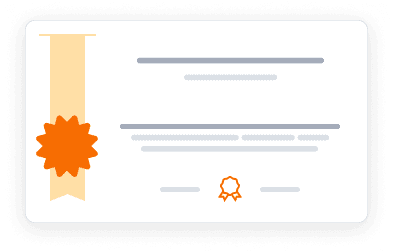This course is part of Electrónica básica.
This comprehensive online course covers the fundamental theory of semiconductor devices in both direct and alternating current. A solid understanding of this theory is essential for designing all types of electronic systems. The electronics course provides students with a clear understanding of how various semiconductors function through a direct and rapid approach, enabling them to easily analyze circuits with components that offer greater functionality, such as diodes, transistors, and thyristors. Students will learn the operation of diode devices, bipolar transistors, and thyristors in DC and AC environments, building a strong foundation for electronic systems design. The course takes a practical approach to understanding semiconductor technology, combining theoretical knowledge with practical applications.
Instructors:
Spanish
Español
What you'll learn
Learn how diodes, bipolar transistors, and thyristors function in DC and AC environments
Understand the principles of semiconductor materials and their applications
Analyze rectifier circuits including half-wave and full-wave configurations
Design basic amplifier circuits using bipolar transistors
Master thyristor applications including dimmers and control systems
Develop skills for electronic systems design
Skills you'll gain
This course includes:
PreRecorded video
Graded assignments, exams
Access on Mobile, Tablet, Desktop
Limited Access access
Shareable certificate
Closed caption
Get a Completion Certificate
Share your certificate with prospective employers and your professional network on LinkedIn.
Created by
Provided by

Top companies offer this course to their employees
Top companies provide this course to enhance their employees' skills, ensuring they excel in handling complex projects and drive organizational success.





There are 5 modules in this course
This course provides a comprehensive introduction to electronic device theory, focusing on semiconductor functionality in both direct and alternating current applications. Students will explore the principles of various semiconductor components including diodes, bipolar transistors, and thyristors. The curriculum covers essential topics such as rectifier diodes, LED diodes, half-wave and full-wave rectifiers, voltage multiplier circuits, bipolar transistors in DC configurations, BJT as a switch, inductive load control, bipolar transistor amplifiers, the re model, small signal analysis, fixed bias circuits, voltage divider bias circuits, audio amplifiers, thyristors in DC (SCR, Shockley diode, DIAC, TRIAC), SCR applications, and thyristors in AC applications including basic dimmers with SCR and TRIAC, and control improvement techniques.
Lesson 1
Module 1
Lesson 2
Module 2
Lesson 3
Module 3
Lesson 4
Module 4
Lesson 5
Module 5
Fee Structure
Individual course purchase is not available - to enroll in this course with a certificate, you need to purchase the complete Professional Certificate Course. For enrollment and detailed fee structure, visit the following: Electrónica básica
Payment options
Financial Aid
Instructors

8 Courses
Director del Área de Electrónica at Galileo University
Eduardo Corpeño, Academic Director at Galileo University, is a leading educator in embedded systems and creator of the Brainfuino platform, with 30+ online courses.

7 Courses
Decano de la Facultad de Ingeniería de Sistemas, Informática y Ciencias de la Computación at Galileo University
Rodrigo Baessa, Dean at Galileo University, holds a Master's in Computer Engineering and teaches circuits, microprocessors, and robotics courses.
Testimonials
Testimonials and success stories are a testament to the quality of this program and its impact on your career and learning journey. Be the first to help others make an informed decision by sharing your review of the course.
Frequently asked questions
Below are some of the most commonly asked questions about this course. We aim to provide clear and concise answers to help you better understand the course content, structure, and any other relevant information. If you have any additional questions or if your question is not listed here, please don't hesitate to reach out to our support team for further assistance.



